Seven critters that call wetlands home
By restoring wetland on your property, these critters could become regular visitors
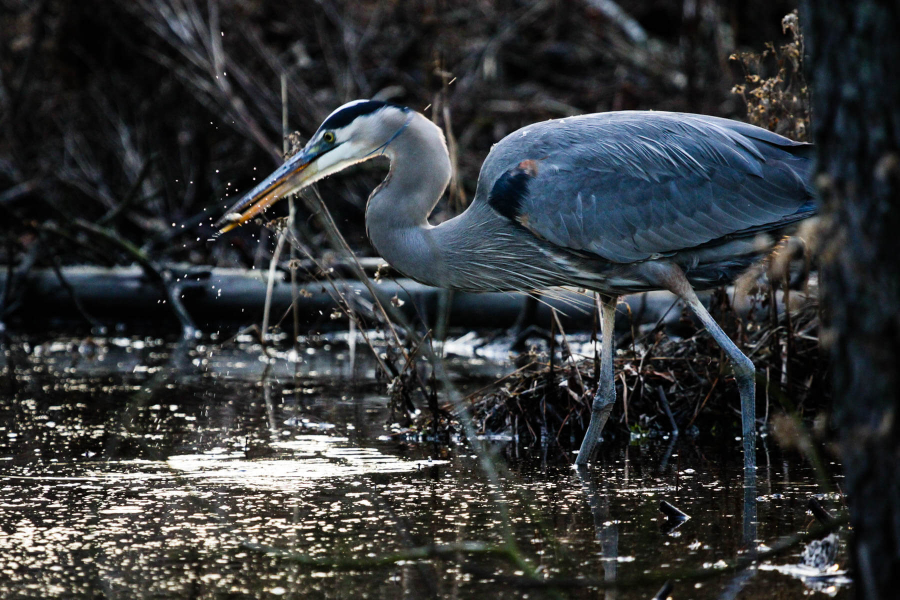
Wetlands are critical ecosystems to the Chesapeake Bay. They act like a sponge, soaking up water and trapping pollutants before they reach our waterways. Wetlands also bring us a diversity of birds, mammals, reptiles, insects and other critters that are attracted to the unique mix of habitats they provide. Because of this, wetlands are great places for sightseeing, birdwatching, fishing and hunting. When we restore wetlands, protect our water while conserving our lands and providing habitat for hundreds of species.
By restoring a wetland on your property, you may just get to see a few of these species.
Great blue heron
The great blue heron is easily distinguished from other wading birds by its large size, bluish-gray color and characteristic S-shaped neck. It is typically seen year-round in wetlands throughout the Bay region, spending 90% of its waking hours foraging for fish, insects, amphibians and crustaceans.
American black duck
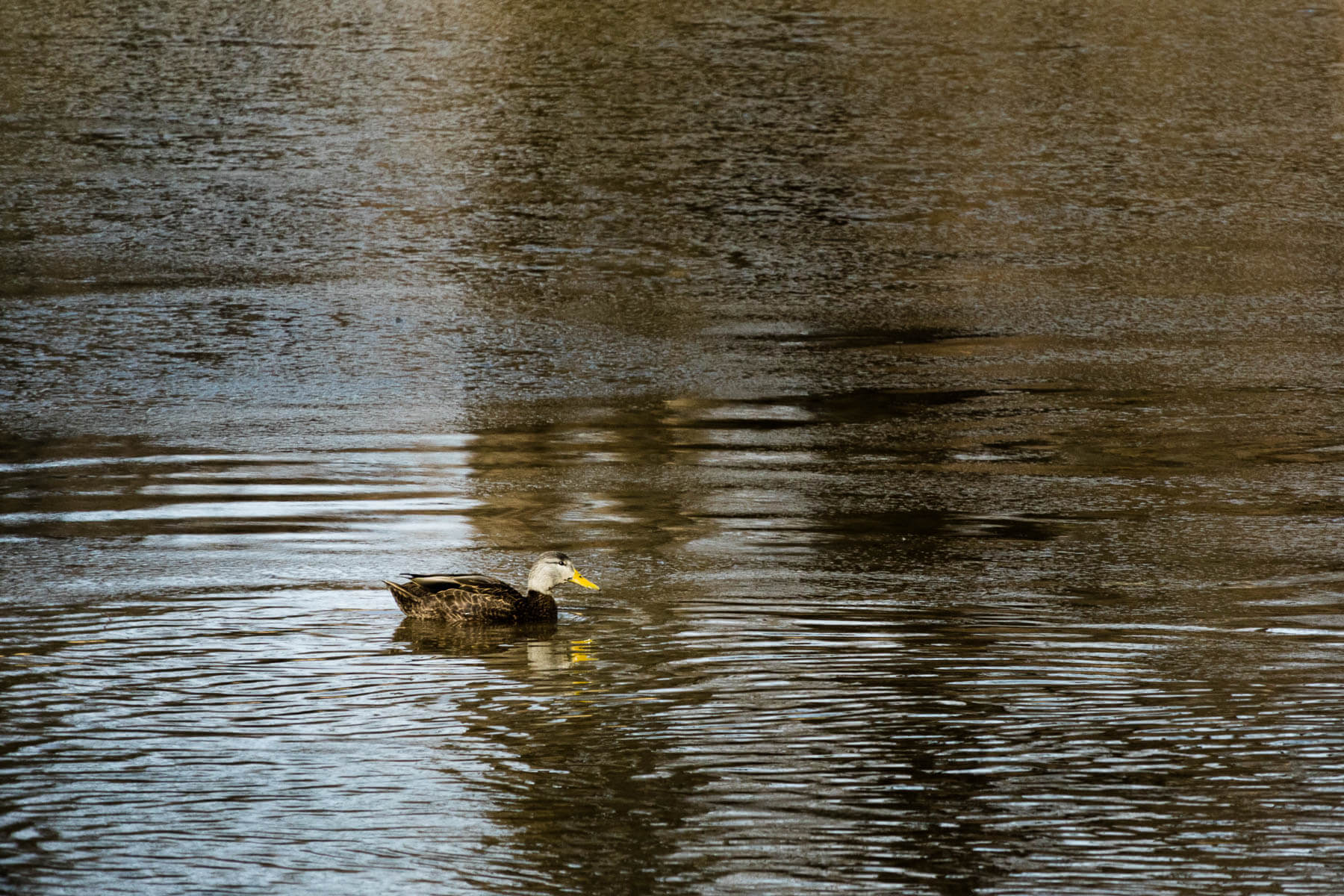
Often called the “gold standard” of eastern waterfowl, the American black duck is a popular species that is important to hunters and outdoor enthusiasts. Black ducks have dark brown plumage and can be easily confused with female mallards. They can be found year-round on coastal, saltwater wetlands, but the population has steadily declined due to loss of food and habitat. Black ducks are important “indicator species,” meaning that black duck habitat restoration also support other waterfowl species, such as green-winged teals and northern shovelers.
Baltimore checkerspot
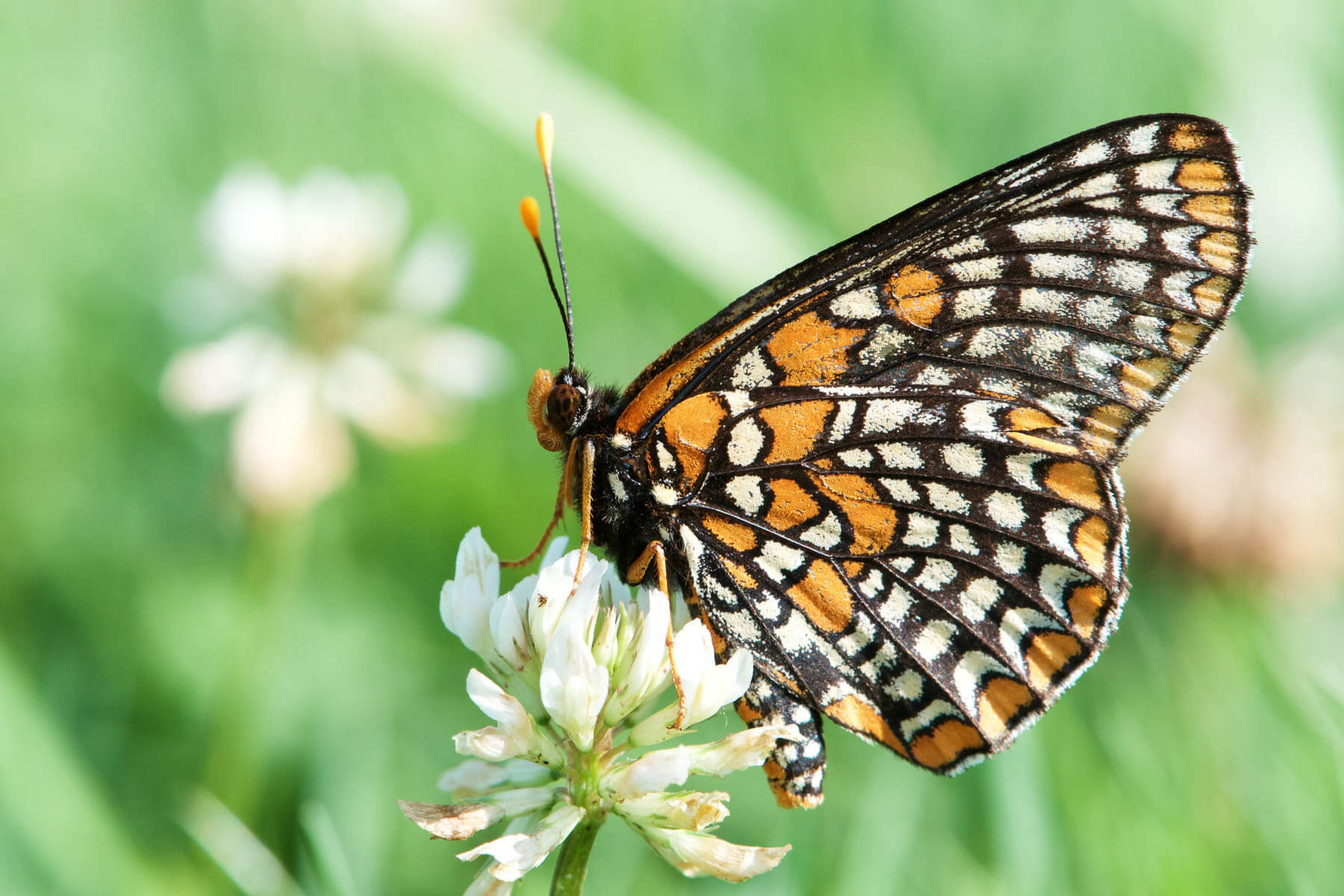
Despite its name, the Baltimore checkerspot is not only found in Charm City—this black, orange and white butterfly can be spotted throughout the entire Bay region. As caterpillars, they feed on marsh plants such as honeysuckle and turtlehead. Once they are adults, the butterflies feed on nectar from wetland plants such as milkweed, dogbane, mountain mind, wild rose and wild blackberry.
Marsh rabbit
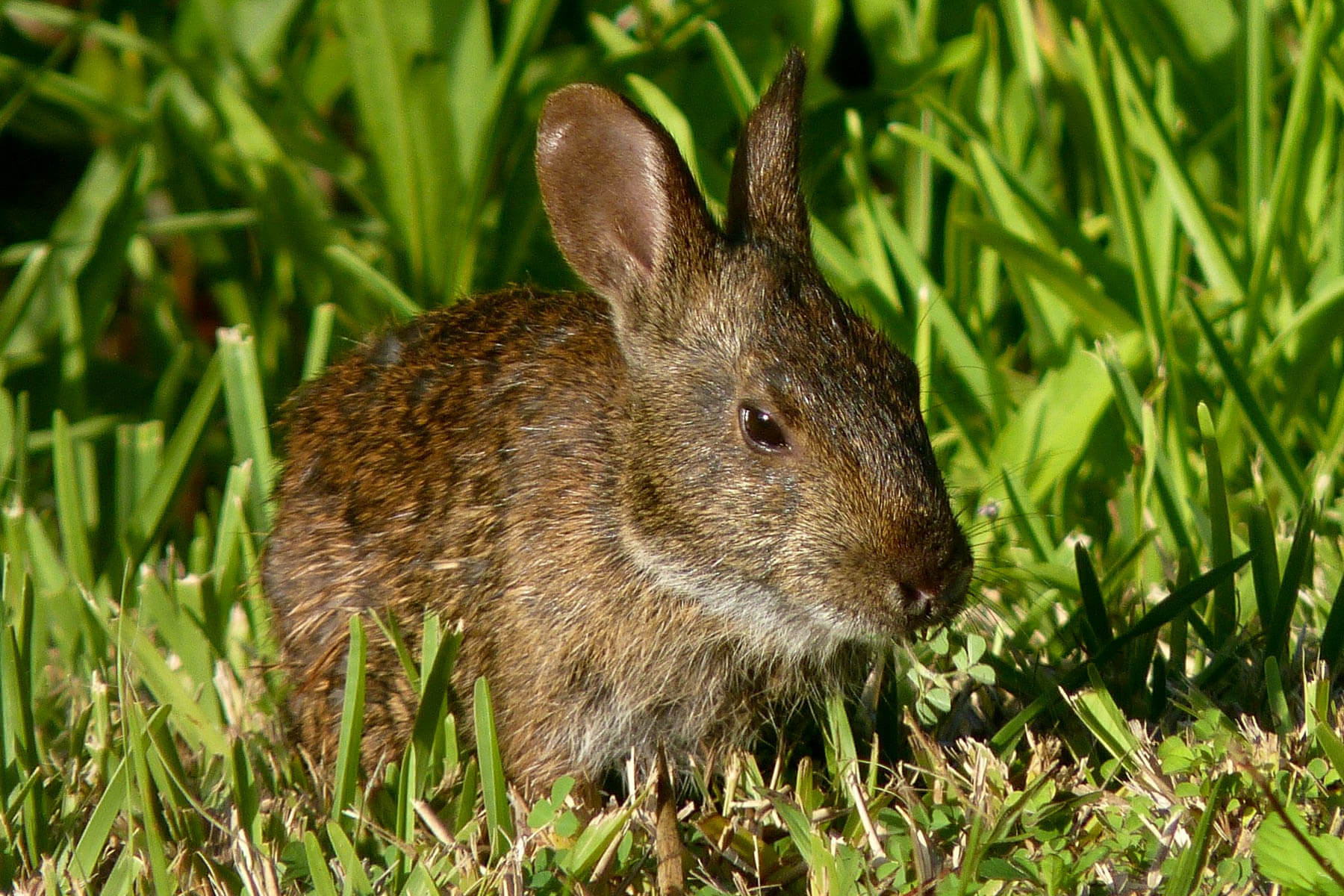
Not to be confused with the much more common eastern cottontail, the marsh rabbit is found only in the marshes and swamps of southeastern Virginia in the Bay region. At first glance it closely resembled a rabbit you might spot in your yard but can be distinguished by its smaller head and feet and rounded ears. Very suited to their habitat, marsh rabbits are excellent swimmers and feed on aquatic plants such as cattails, water hyacinth and marsh grasses.
Saltmarsh sparrow
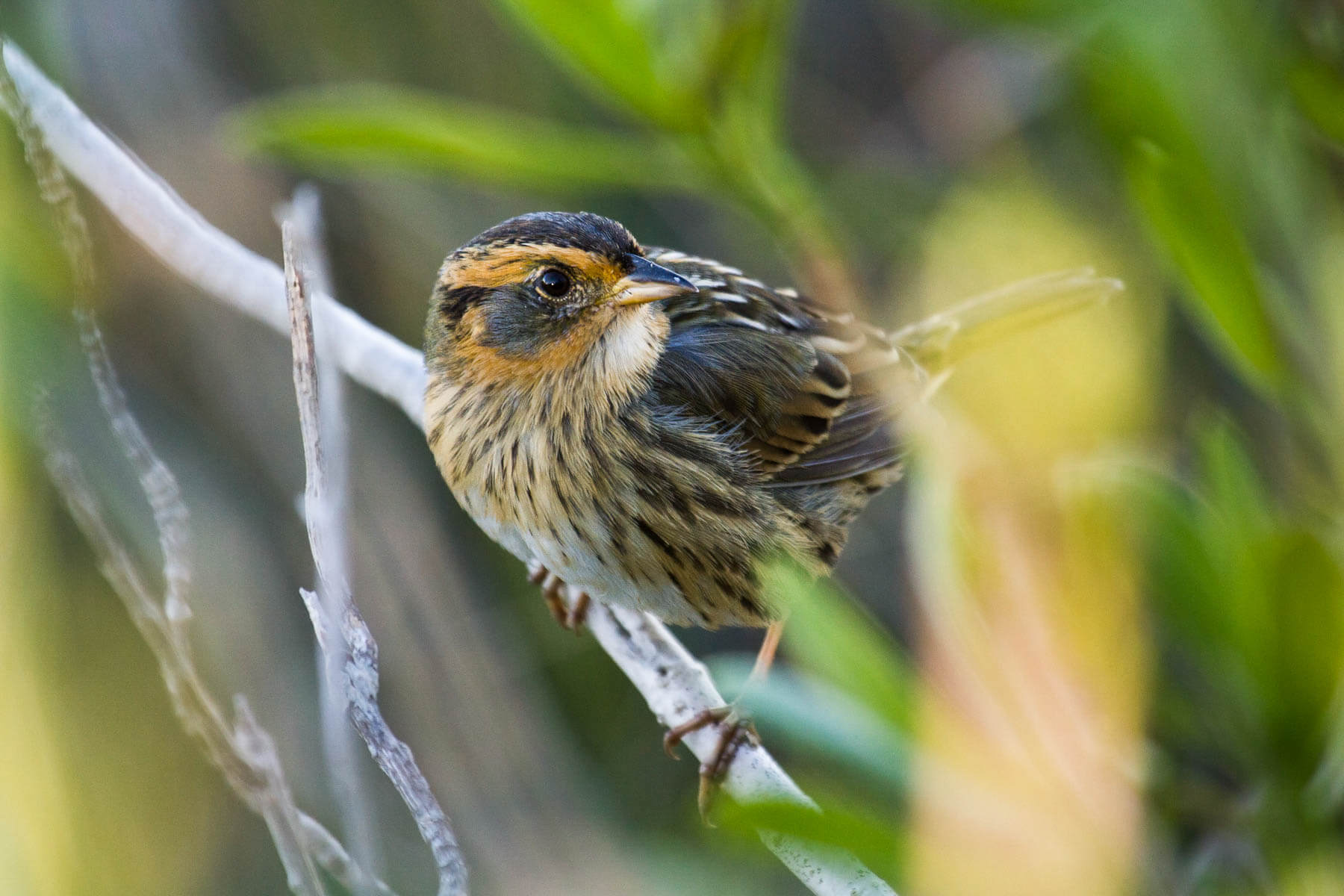
It takes patience to find this small, secretive species. The rusty brown, gray and orange coloring blends in with the surrounding tidal saltmarsh plants, and its quiet song is often overpowered by louder wrens, rails and other species. Nesting just above the high tide line in cordgrass, saltgrass and needle rush, the saltmarsh sparrow is threatened by habitat loss and sea level rise. The population has been declining so rapidly that the U.S. Fish and Wildlife Service is considering listing this species under the Endangered Species Act.
Diamondback terrapin
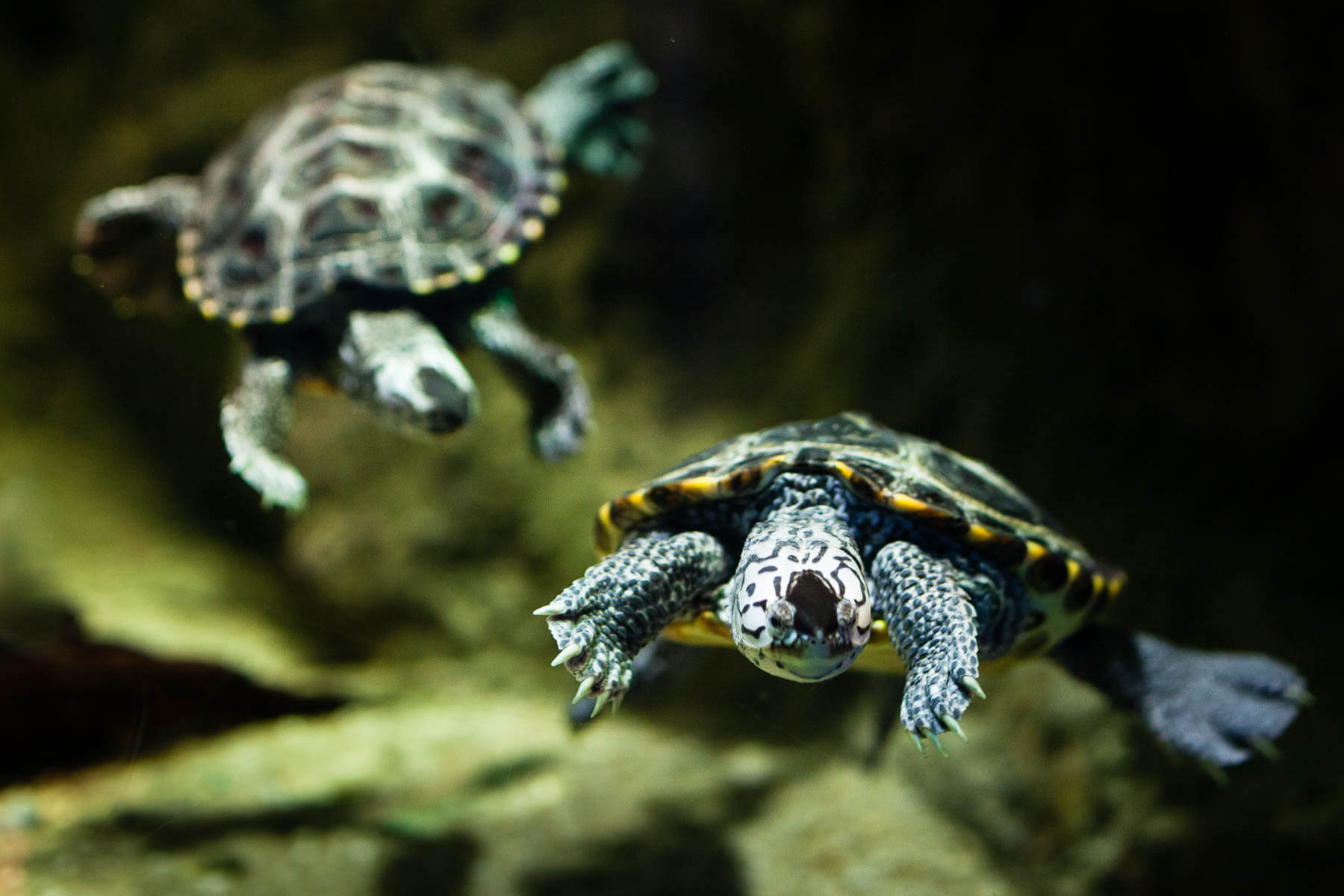
Maryland’s official state reptile lives in the Bay’s brackish tidal waters, rivers and streams. It is easily distinguished from other turtle species by the diamond-shaped rings on its shell and white/gray skin that is covered with black markings. Diamondback terrapins are believed to be the only turtle in the world that lives solely in brackish water, making it incredibly unique. Though they feed and mate in the water, females lay their nests on the sandy borders of coastal salt marshes. Thanks to regulations to protect this species, terrapin populations have rebounded since their historic low in the 18th and 19th centuries, when they were harvested for terrapin soup.
Muskrat
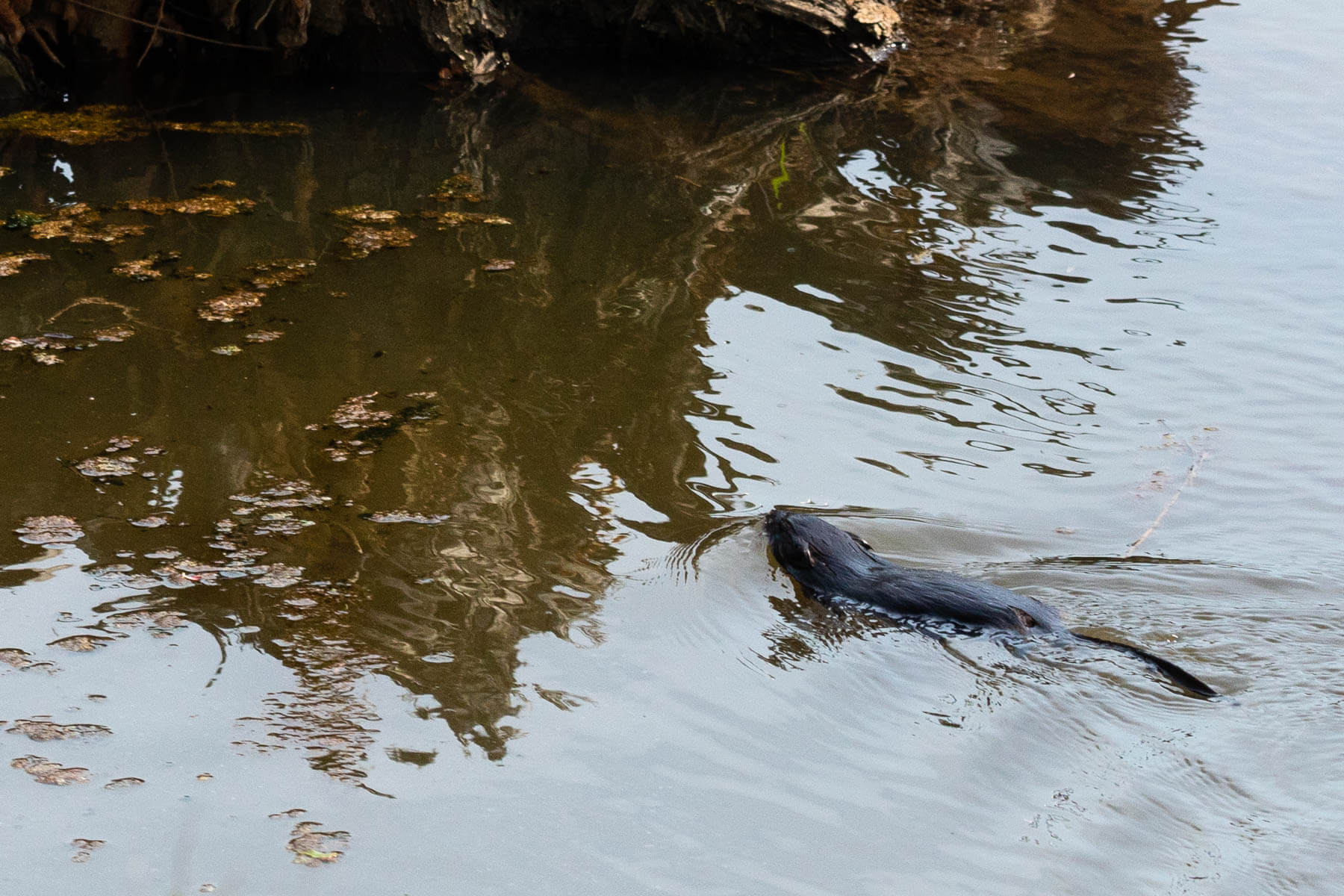
Muskrats are found in marshes and shallow-water areas throughout the Bay watershed and are the most common semi-aquatic mammal found in the region. They are often confused with beavers, but are typically smaller and have a scaly, hairless tail. Muskrats eat one-third of their body weight each day, feeding on the roots of marsh plants, fish, frogs, insects and shellfish. They serve as prey for several other species, and are even hunted by humans for meat, fur and sport.
Healthy wetland habitats are incredibly important to sustain these species, as well as many others. Learn more about the benefits of wetlands and how you can restore wetlands on your property on the Wetlands Work website.

Comments
There are no comments.
Thank you!
Your comment has been received. Before it can be published, the comment will be reviewed by our team to ensure it adheres with our rules of engagement.
Back to recent stories